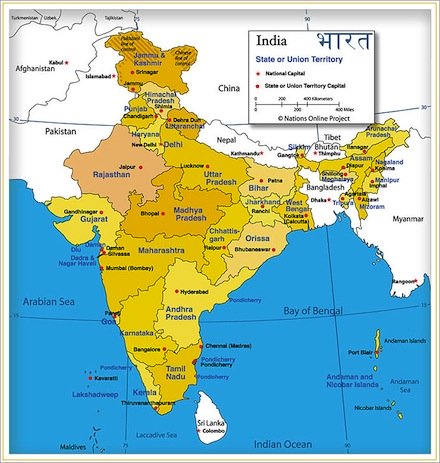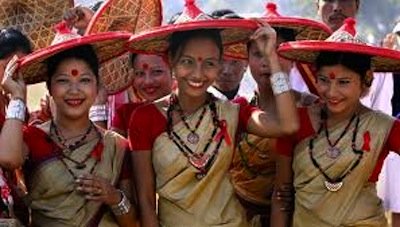The Indian State of Assam
The Indian State of Assam is Located in Northern India
The Indian State of Assam is located in the northern part of India. It officially became a State of India on August 15, 1947, after India gained its independence from British rule. That being said, the history of this area of the land goes back much farther in time.
The Indian State of Assam has a land area 30,328 square miles, and it shares borders with the Indian states of Arunachal Pradesh, Nagaland, Manipur, Mizoram, Tripura, and Meghalaya. It also shares borders with the Bhutan and Bangladesh.
It has a very interesting land layout consisting of the Brahmaptura and Barak River valleys and the North Carchar Hills. The geography of the Indian State of Assam is diverse, in part, because the state is located just south of the eastern Himalaya Mountains.
The state is home to the famous temple called Kamakhya Temple. It represents people of many different races, religions, and cultures who migrated to this location throughout the history of India. This landmark is one of the state's many temples. The Indian State of Assam is also home to Temples of Babagraha, Umananda, Basisthashram, Mahabhairab, Madan Kamdev, and multiple Satras. Satras are similar to monasteries and they promote Vaishnavism, a popular tribal religion which is followed in this area.
The population here in 2011 was 31,169,272 people, making it India's fourteenth most populated state. It's famous for its Assam Tea and is very important for wildlife lovers too. It is home to the one-horned Indian Rhinoceros, tigers, numerous bird species, and it is one of the world's last safe havens for the Asian Elephant. Needless to say, it's becoming a popular destination for wildlife tourism.
Archaeological excavations have proved that early man was present in the Indian State of Assam during the stone age. During India's ancient culture, many dynasties ruled over this region. There was a time in India's modern history, between 1817 and 1821, when the people of Assam aided the British in invading the Burmese. This turned out to be a huge disaster because the Burmese overtook the state and ruled it for quite some time.
In 1824, the Burmese reached the borders of the East India Company; this led to the first Anglo Burmese war, which continued until a treaty known as the Treaty of Yandaboo was signed in 1826.
The British controlled the state for a long while, but the Indian National Congress was established in the early 20th century, and the people of the Indian State of Assam joined ranks to fight against the British. India did, in fact, gain its independence from Great Britain. Following India's gain of independence from Britain, there were large cultural splits among the different ethnic groups of this state.
The primary religions followed here are Hinduism, which accounts for more than half the population, Islam, Christianity, Sikhism, Buddhism, and Jainism. The Indian State of Assam has a culture that is diverse. It is made up of cultural aspects of many different ethnic groups. Think of it as a melting pot. The primary languages spoken are Assamese, Bodo, and Bengali.
Agriculture makes up approximately one-third of the economy of the Indian State of Assam, and it provides work for sixty-nine percent of the people. It also plays a role in shaping the lifestyle of the people. There is a major statewide celebration that takes place here called Bihu. Bihu is the festival that marks the seasons and important aspects of farm life over different growth cycles. As such, a different celebration is done at the change of each season.
Many traditional crafts are made by people how Assam. They include brass items, such as dishes, metal bell items used for worship and festivals, and manuscript paintings that tell different stories. Other popular crafts include bamboo and canes crafts, rugs, pottery, jewelery, painted art, and ivory sculptures.
The state also excels at boat building, producing gun powder, and making guns. The economy of Assam took awhile to catch up with the rest of modern India. For a long time, the state only experienced half the growth it should have, in comparison to the overall Indian economy.
However, in the last decade it has caught up quickly! A large part of the economic improvement in Assam is due to it supplying about twenty-five percent of India with oil that is drilled within its boundaries.
The Indian State of Assam capitalizes on tourism too. In addition to the amazing temples and monasteries mentioned earlier, the state boasts Wildlife preserves called the Kaziranga National Park and Manas National Park. These parks showcase animals, such as the Great Indian One-Horned rhinoceros. These tourism opportunities are Indian Safaris.
There are also fresh water islands and scenic areas unlike anywhere else in the world here! Assam is definitly a place worth visiting!
Leave Assam to discover the other India States.
Check out these useful tips for traveling to India.
Visit our homepage to continue exploring India.




